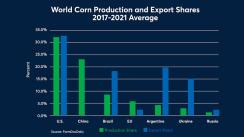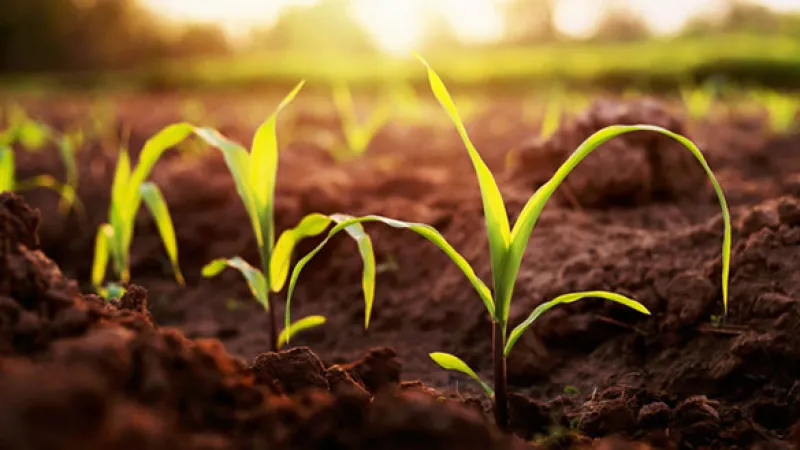By Bruce Blythe, for CME Group
AT A GLANCE
- Grain producers face more uncertainty than usual as they look toward a new planting season
- As crop risks mount, more producers are looking to short-dated new crop options as a hedging tool
U.S. grain producers preparing for the 2022 spring planting season face more risk factors than ever, some that are more typical – weather and export demand, for example – than others.
This year, the ongoing pandemic recovery, inflation that’s running at four-decade highs and Russia’s recently launched war with Ukraine make for a particularly challenging environment for anyone in agriculture.
As a result, 2022 “is perhaps the most dynamic market farmers have ever had to evaluate when making spring planting decisions,” said Chip Flory, a Farm Journal economist and host of Agri Talk Radio. Crop input costs have soared, with fertilizer prices tripling over year-ago levels in some areas, Flory noted during a recent OpenMarkets Roundtable.
According to Texas A&M University, fertilizer costs for the 2022 planting season may increase more than 80% over 2021 levels. One-third of U.S. corn producers plan to reduce their nitrogen application rates compared to 2021, based on the February Ag Barometer from Purdue University and CME Group.
Sky-High Fertilizer Costs
Fertilizer costs will be a critical consideration as farmers weigh how much acreage to devote to corn, soybeans or other crops, said Scott Irwin, Professor of Agricultural Economics at the University of Illinois, who was also part of the roundtable.Corn typically requires more fertilizer than soybeans and thus per-acre costs tend to be higher. Earlier in the winter, as fertilizer prices climbed and drought in South America slashed production prospects in Argentina and Brazil, new-crop soybean futures rose more than corn. That suggested farmers would increase soybean acres at the expense of corn.
More recently, Russia’s invasion of Ukraine sent wheat prices rallying to 14-year highs on fears of disruptions to the global grain trade. Corn also rallied, with nearby prices surging above $7 a bushel and new-crop futures closing a gap with soybeans. Combined, Russia and Ukraine account for nearly 30% of global wheat exports and almost one-fifth of world corn exports.

Still, “there’s a lot of incentives for soybean production this year,” Irwin said. “It’s important to keep in mind that both crops are still profitable, unless you’re buying on the spot fertilizer market right now.”
Unusual Circumstances Demand More Flexible Hedging Tools
This year’s unusual circumstances illustrate grain producers’ need for more flexible hedging strategies and tools, such as short-dated new crop (SDNC) options, said Tim Andriesen, Managing Director of Agricultural Products at CME Group.With a lower “time value” compared to standard options, SDNC options enable producers to manage risk or gain exposure in new crop futures contracts at a relatively lower cost and build strategies around near-term events earlier in the year, such as development of Brazil’s “safrinha” (second) corn crop and USDA’s Prospective Plantings report March 31.
There’s been a “significant” increase in the use of SDNC options among producers and others in agriculture, Andriesen said during the roundtable. Open interest – or the number of open positions -- in SDNC options surpassed 100,000 contracts in late February, while average daily trading volume in February was almost double that of 2021. Corn and soybean market volatility soared in late February and early March, but still has potential to climb even higher over the summer, Andriesen said. “This is the environment where SDNC options shine relative to standard options,” he added.
As U.S. grain producers enter a third pandemic-era planting season, the risk “stories” – weather, geopolitics, input costs and more – promise to “stick around,” influencing the industry’s planting and profit outlooks in the months ahead, Flory concluded. “How producers manage these risks will be a critical factor for the U.S. grain industry in 2022,” he said.
Read more about short-dated new crop options and key risks ahead of the U.S. planting season.
Read more articles like this at OpenMarkets






